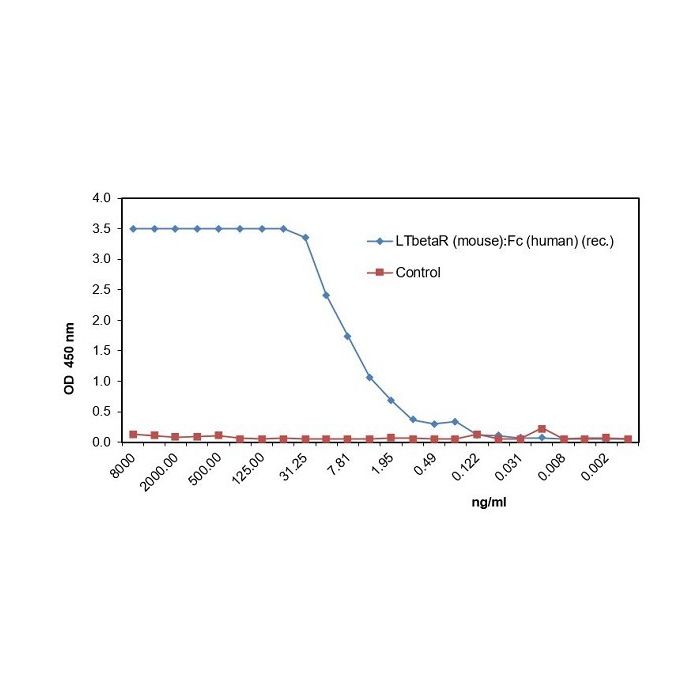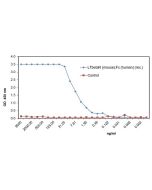Cookie Policy: This site uses cookies to improve your experience. You can find out more about our use of cookies in our Privacy Policy. By continuing to browse this site you agree to our use of cookies.
AdipoGen Life Sciences
LTβR (mouse):Fc (human) (rec.)

| Product Details | |
|---|---|
| Synonyms | Tumor Necrosis Factor Receptor Superfamily Member 3; TNFRSF3; Lymphotoxin-beta Receptor; Tumor Necrosis Factor Receptor 2 Related Protein; Tumor Necrosis Factor C Receptor |
| Product Type | Protein |
| Properties | |
| Source/Host | HEK 293 cells. Produced using animal component-free medium. |
| Sequence |
The extracellular domain of mouse LTbetaR (aa 31-217) is fused at the C-terminus to the Fc portion of human IgG1. |
| Crossreactivity |
Human Mouse |
| Specificity |
Binds to mouse and human LTα1β2 (Lymphotoxin β) and LIGHT (TNFsf14). |
| MW | ~60kDa (SDS-PAGE) |
| Purity | ≥95% (SDS-PAGE) |
| Endotoxin Content | <0.01EU/μg purified protein (LAL test). |
| Concentration | 1mg/ml after reconstitution. |
| Reconstitution | Reconstitute with 50μl sterile water. |
| Accession Number | P50284 |
| Formulation | Lyophilized. Contains PBS. |
| Protein Negative Control | |
| Other Product Data |
UniProt link P50284: LTbetaR (mouse) |
| Shipping and Handling | |
| Shipping | BLUE ICE |
| Short Term Storage | +4°C |
| Long Term Storage | -20°C |
| Handling Advice |
After reconstitution, prepare aliquots and store at -20°C. Avoid freeze/thaw cycles. Centrifuge lyophilized vial before opening and reconstitution. PBS containing at least 0.1% BSA should be used for further dilutions. |
| Use/Stability |
Stable for at least 6 months after receipt when stored at -20°C. Working aliquots are stable for up to 3 months when stored at -20°C. |
| Documents | |
| Product Specification Sheet | |
| Datasheet |
 Download PDF Download PDF |
Lymphotoxin β receptor (LTβR) belongs to the tumor necrosis factor receptor superfamily (TNFR) and is a key regulator of lymphoid organogenesis and inflammation. LTβR is primarily expressed by epithelial cells, dendritic cells (DCs), stromal cells and macrophages. LTβR interacts with two ligands: membrane heterotrimeric lymphotoxin LTα1β2 (LT) and homotrimeric LIGHT, both expressed predominantly by activated lymphoid cells. LTβR signaling can activate both canonical and alternative NF-kB signaling to induce various proinflammatory chemokines and cytokines and promote apoptosis via TRAF3 and TRAF5. LTβR also plays a role in the development of lymphoid organs. LTβR (mouse):Fc treatment partially impairs the structure of secondary lymphoid organs and shows therapeutic efficacy in various models of inflammatory diseases.







